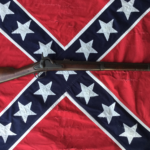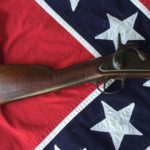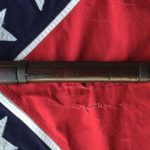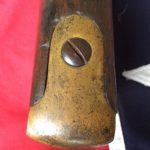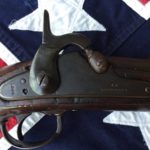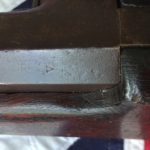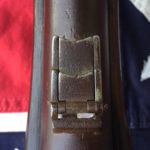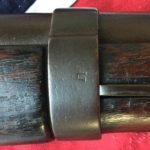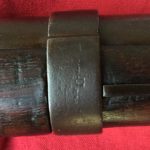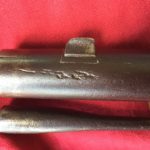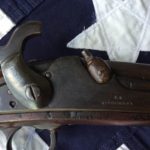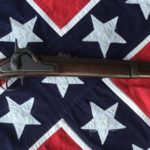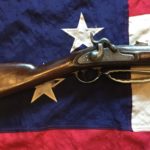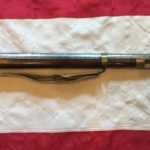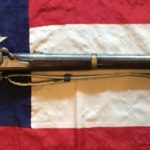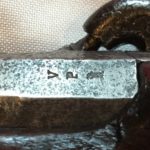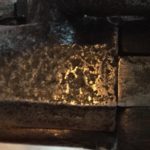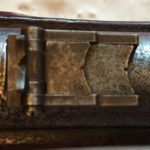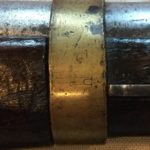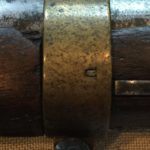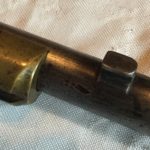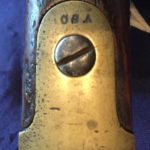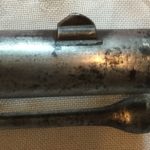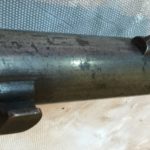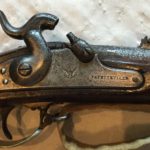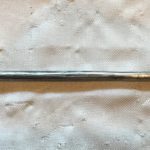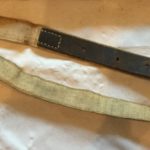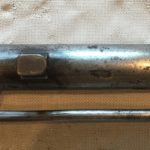- 1864 Richmond Armory Carbine
- 1864 Richmond Shoulder Stock
- Richmond Carbine Forward Stock
- 1864 Richmond Brass Butt Plate
- 1864 Richmond Lock-plate
- 1864 Richmond Carbine Proof Marks
- Richmond Carbine Rear Sight
- Richmond Carbine Barrel Band
- Richmond Carbine Forward Barrel Band
- 1864 Richmond Carbine Front Sight
- Richmond Lock-Plate Full Cocked
- 1864 Richmond Carbine
A while back I acquired this 1864 Richmond Carbine to compliment my growing collection of Southern Weapons. I already had in my collection a 64 Richmond Carbine however it had some issues so I traded it and a 63 Richmond Carbine for a killer Thomas, Griswold & Co Artillery Saber, which I’ve recently written about.
My new 64 Richmond is about as good as it gets, the stock is in great shape with a couple of scratches and dings but nothing out of the ordinary for a 155 year old weapon. The barrel, lock plate, barrel bands and trigger guard all have a pleasing brown hue to them and the brass butt plate and the nose cap are a sweet mustard color we would expect from Southern made Brass.
Still fitted with its original rear sight (which is often missing on most Richmond weapons) with both its barrel bands having an offset U, confirming that these were hand stamped and original to the Carbine. The original ram rod is no longer present however it does have a blacksmith made ram rod which in my opinion has been with the Carbine for a long time based on its color.
All of its sling mounts have been removed, my best guess is the the sling rings were more of a hindrance then not so they were cut off……. the top barrel band, trigger guard as well as the sling swivel that gets screwed into the base of the stock are all MIA. An interesting observation is that there’s no indentation mark on the stock or on the trigger guard (where the sling mounts make contact) suggesting that the sling mounts must have been removed when the weapon was first issued.
Another interesting observation is there is only a partial proof mark on the barrel, the V for viewed is clearly present and there’s a very slight impression of the P for proof but there’s no Eagle present. I don’t believe this to be a confiscated condemned Harper’s Ferry barrel…….it has way to many imperfections on the barrel made by the barrel roller machine, these imperfections would not be acceptable by Harper’s Ferry standards, however they would be by Richmond’s Armory standards.
There you have it another Southern Carbine brought to you by the Civil War Arsenal. If you have any questions about this weapon or any of the other weapons in my arsenal feel free to contact me at civilwararsenal@yahoo.com attn: Gene West.

